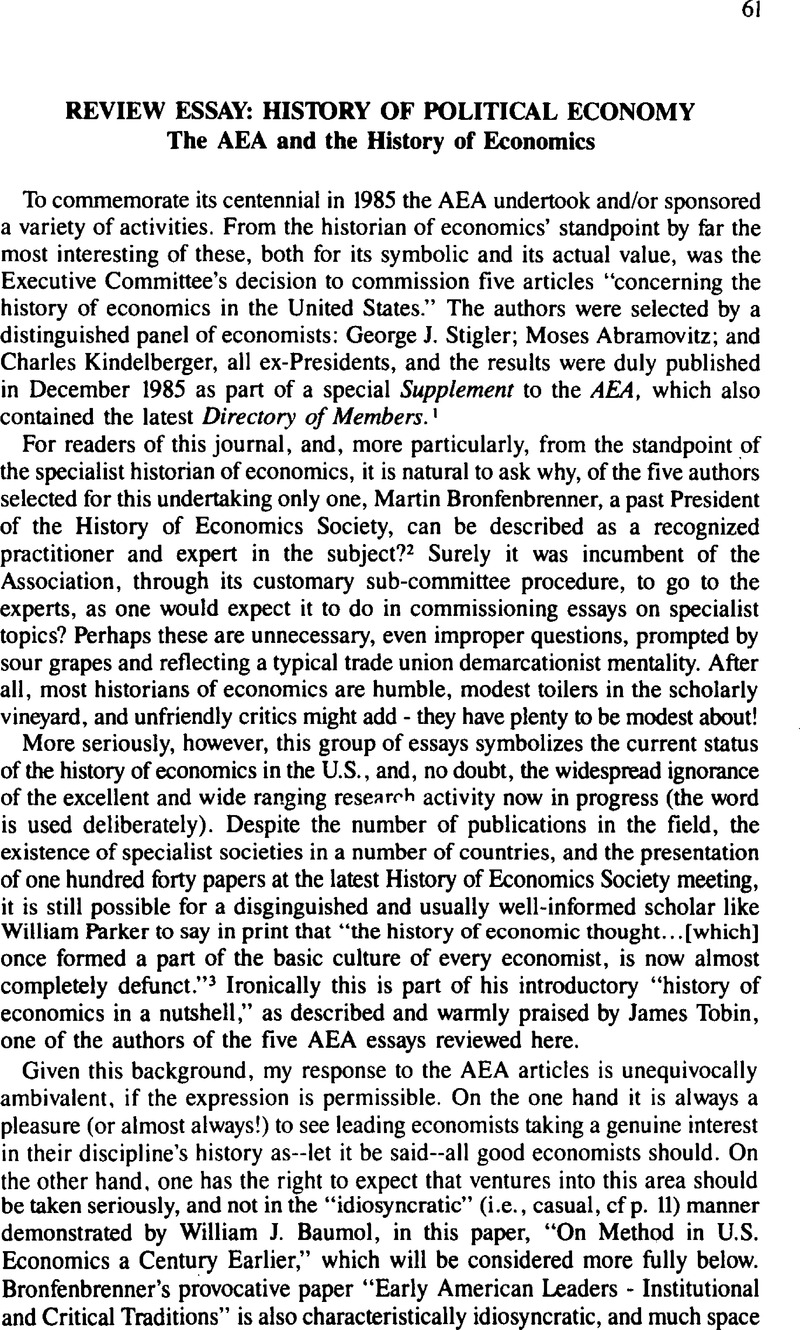Published online by Cambridge University Press: 11 June 2009

1 Baumol?, William J., “On Method in U.S. Economics a Century Earlier,” pp. 1–12Google Scholar; Brohenbrenner, Martin, “Early American Leaders - Institutional and Critical Traditions,” pp. 13–27Google Scholar; Tobin, James, “Neoclassical Theory in American: J.B. Clark and Fisher,” pp. 28–38Google Scholar; Christ, Carl F., “Early Progress in Estimating Quantitative Relationships in America,” pp. 39–52Google Scholar; Jack, Hirschleifer, “The Expanding Domain of Economics,” pp. 53–68. All in American Economic Review, Vol. 75 (6) 12, 1985).Google Scholar
2 Baumol, William J. is a marginal case. While not, perhaps, a recognized historian of economics he has published a number of valuable historical articles and a section on the history of economics in his latest textbook, Microtheory: Applications and Origins (Boston: MIT Press, 1986) (I owe this reference to the editor of the Bulletin.)Google Scholar
3 Parker, William R. (ed.), Economic History and the Modern Economist (Oxford: Blackwell, 1985) p. 8.Google Scholar
4 Cf. her article in James, Soltow (ed.), Essays in Economic and Business History, Vol. III, 1984.Google Scholar
5 See, for example, the excellent small book by Andrew, Kamarck, Economics and the Real World (Philadelphia: University of Pennsylvania Press, 1983).Google Scholar
6 Quantitative Analysis in Economic Theory,” American Economic Review Vol. XV (03, 1925, pp. 1–12Google Scholar), reprinted in his The Backward Art of Spending Money and other Essays (New York: McGraw Hill, 1937Google Scholar). See also Viner, Jacob and others, “The Present Status and Future Prospects of Quantitative Economics: Discussion,” American Economic Review, Supplement Vol. 18 (03, 1928), pp. 28–45.Google Scholar